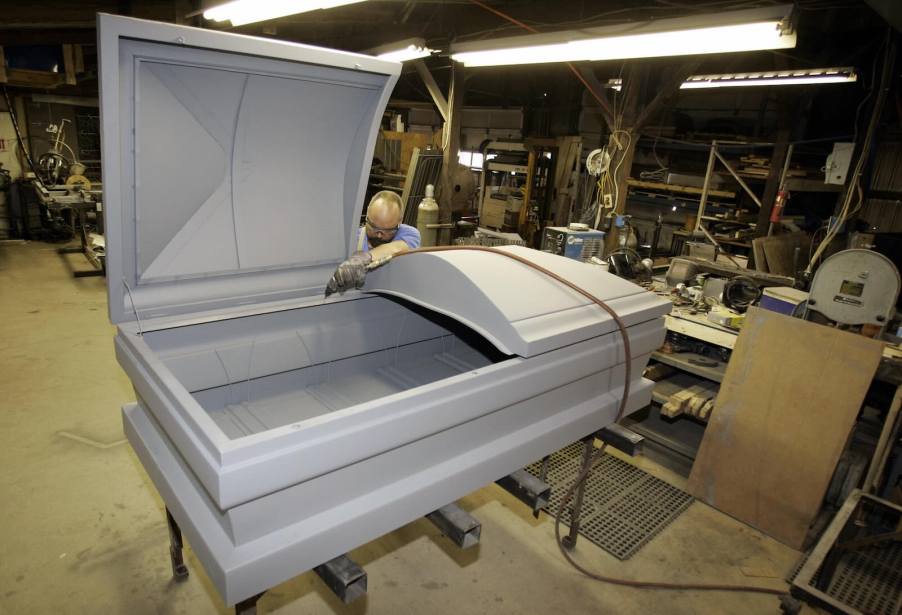
What do EMTs do with a body too big to fit in a hearse?
Picture this: you’re an EMT, called in for a routine welfare check. Only, it’s not routine at all. You find the person deceased, and they happen to be, well, larger than life. This is the scenario Matt W. faced, as he explained to Thrillist. The expired man was not only big, but swollen due to post-death bloating. And to put it bluntly, he wouldn’t fit in the hearse. They ended up calling the state to have a truck sent for the job.
Unfortunately, this situation isn’t rare. The obesity epidemic is changing everything from how we live to how we die. Over 41% of Americans are now classified as clinically obese, according to the US-Funerals website, and the forecast looks even grimmer for the next decade.
The “deathcare” industry must adapt to provide dignified burials for all customers. Standard casket sizes have already increased from 24 to 27 inches. Companies such as Goliath Caskets are taking it further, crafting custom caskets up to 52 inches wide for individuals weighing as much as 1,000 pounds.

Funeral homes are also getting creative. Larger bodies require more resources, from specialized cranes to extra pallbearers. What about picking up the body and transporting it to the funeral in the procession? Some homes have even started using refrigerated vans to transport oversized remains, rather than relying on traditional hearses.
Matt W.’s experience was far from ordinary. It was one of his first calls—a welfare check, where family or neighbors hadn’t seen the individual for a while. “We get there, and the guy has been dead for quite a while,” Matt explained. “He’s a pretty large dude to begin with, and when we get there, he was pronounced dead immediately.”
It’s at this point that the situation escalated. As a body decomposes, the resulting gas can cause the body to swell, creating even more logistical issues for removal. “The medical examiner came, and when someone dies, the body swells up and you have to get rid of some of the fluids. So the medical examiner decides, OK we’re going to ‘pop’ him essentially… right in the room,” Matt recalled.
Even after this process, the body was still too large to transport easily. “And still, after that, he would not fit in the hearse. So we had to wait for a state pickup truck to come, and we ended up driving down the road in a pickup truck holding the body in the truck to bring down to the morgue,” Matt recounted. It’s not exactly the dignified transport one imagines, but sometimes practicality has to come first.
Matt’s story highlights the changing landscape for EMTs and funeral homes alike. With the rise in obesity, transporting bodies isn’t as simple as calling for a hearse. Funeral homes are now adding larger hearses or refrigerated vans to their fleets, but in cases like Matt’s, an EMT team may have to call in a truck. It’s a logistical challenge, and an evolving one at that–just like the rest of the deathcare industry.



